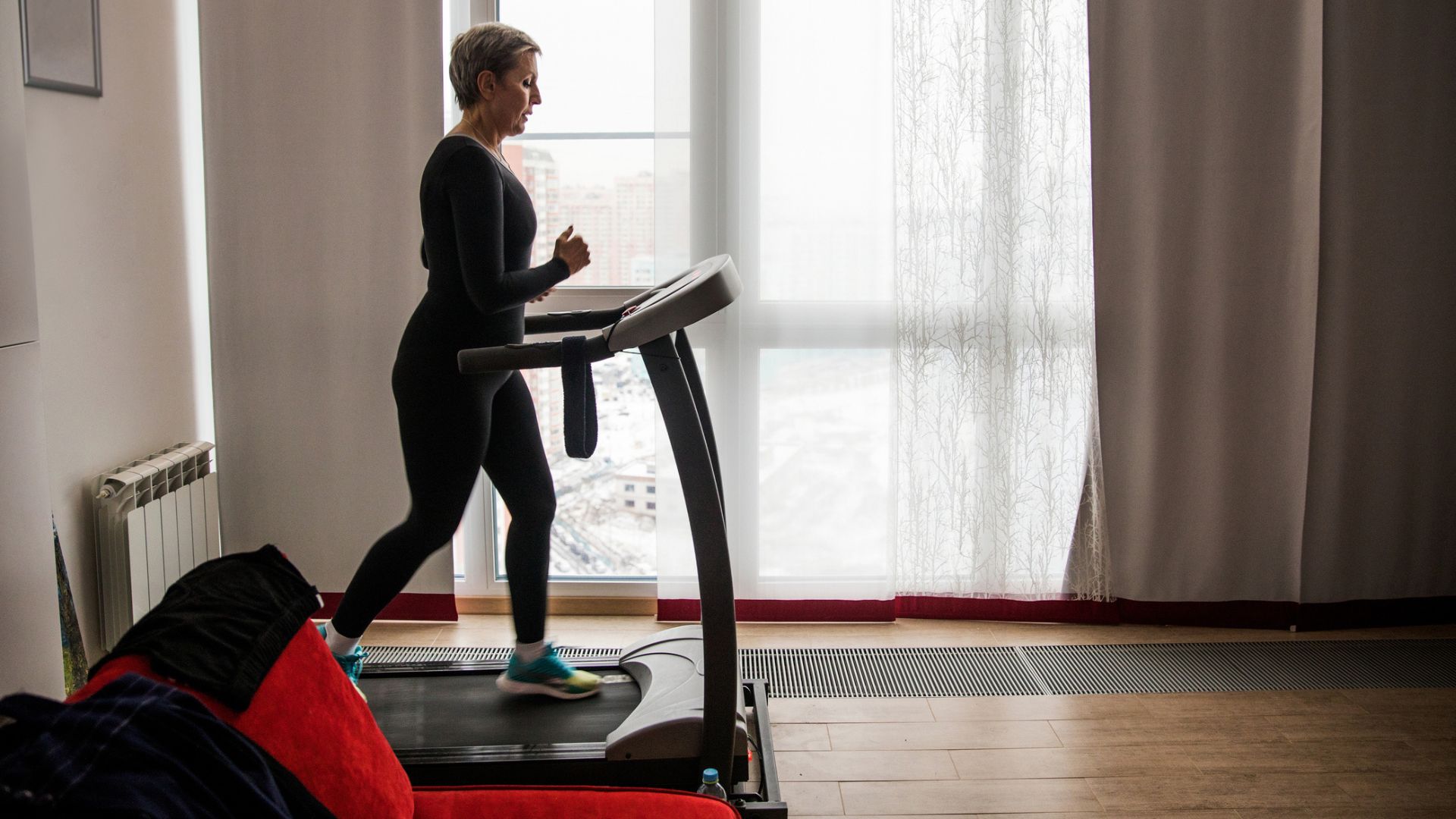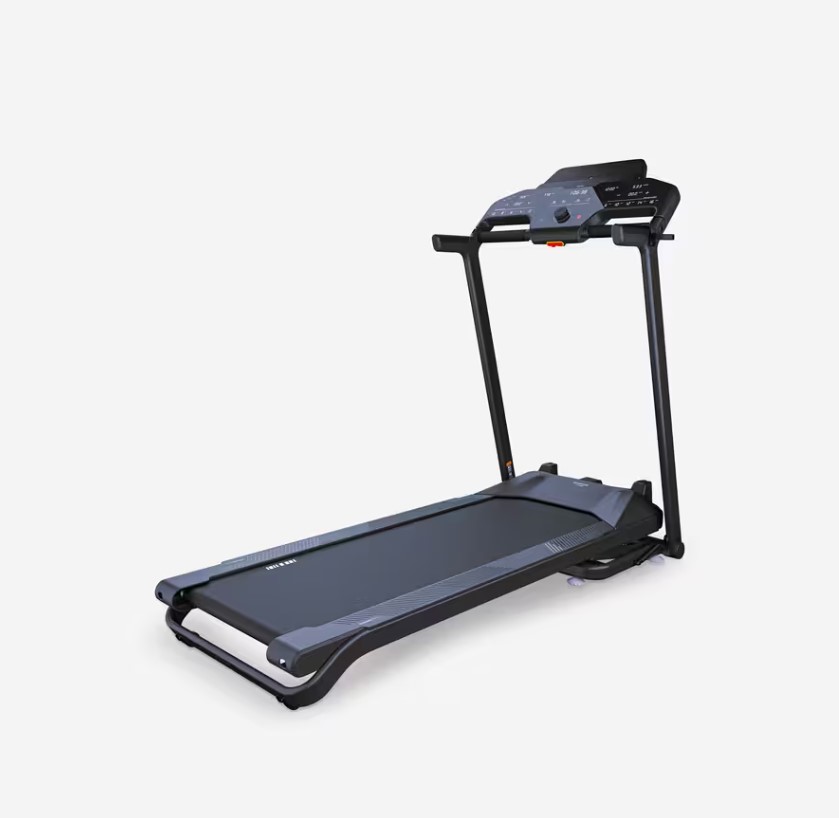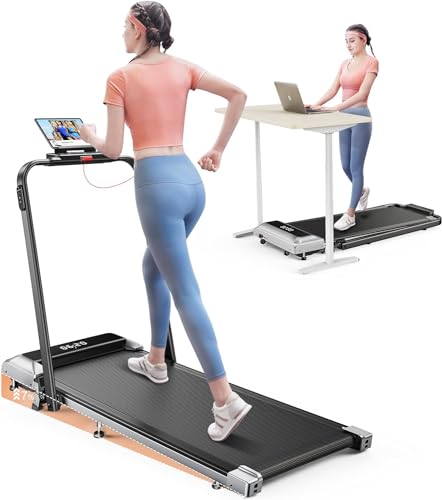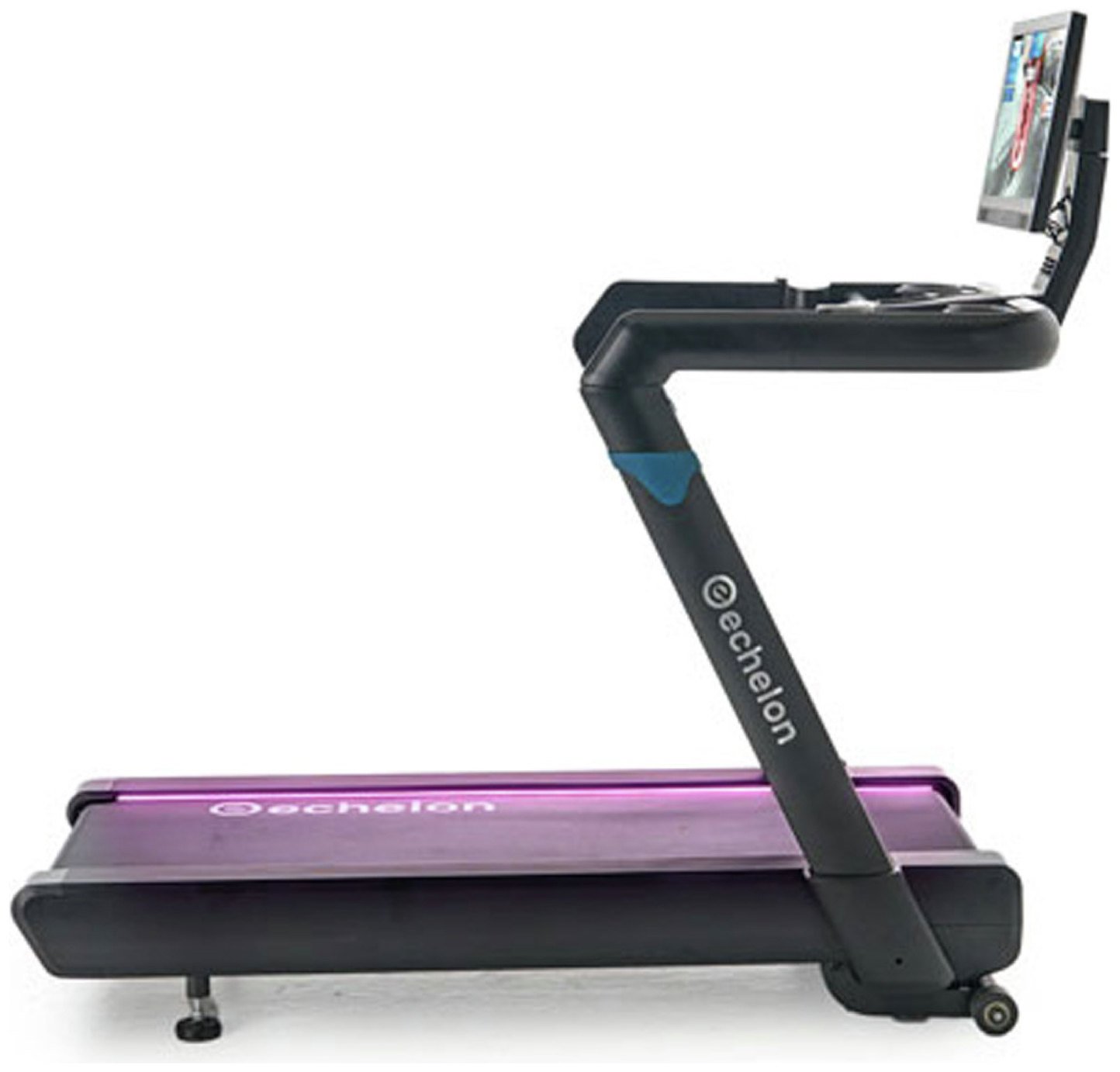
Doing Couch to 5k on a treadmill is one way to improve your fitness while staying out of the wind and rain this winter. The walk-run plan has many benefits and completing it in the gym or at home adds a few more to the list.
Couch to 5k is an NHS-approved plan for those who want to pick up a pair of running shoes and start running as a beginner. The goal is to take you from never having run before (or not having run in years) to running a 5km (3.1 miles) in as little as eight weeks. Starting points depend on your fitness level, but most people begin by alternating running and walking before eventually building up to running the full distance.
It's an excellent program, says Sarah Campus, certified PT and women's fitness specialist. "Couch to 5K is a free and easy way of getting fitter and healthier, and doing it on a treadmill can allow for more accurate pacing, incline and difficulty without needing to battle the elements." Here, we reveal exactly how to get the most from doing Couch to 5k on a treadmill, the must-haves, and the benefits of doing the program from the comfort of the inside.
How to do Couch to 5k on a treadmill
1. Download the app
Before getting onto your treadmill, download one of the best running apps that offers a Couch to 5k program. It doesn't need to be an app with a treadmill-specific Couch to 5k - any of them will do.
If you're looking for the basic program, complete with coaching from famous faces like comedian Sarah Millican and DJ Jo Whiley, the NHS Couch to 5k app is a great choice. Most people run 5km in about 30 minutes by the end of eight weeks.
The Nike Run Club app has a Couch to 5km program, as does the Peloton app - but it's called 'Road to the 5km' instead.
2. Set your incline to 1%
Next, find the incline level on your machine and flick it up a few notches. Running on a flat treadmill surface is just jumping up and down in one spot. Elevation is essential to improve your running style and run more efficiently outdoors. It will also reduce pressure on joints such as the knees, hips, and ankles.
"Starting on an incline of 1% replicates outdoor running and you can always move to 3% incline as you progress to replicate hills," says Campus.
3. Set your walking speed between 4 to 5kph
For the walking parts of the program, aim for a speed of about 4 to 5kph on the treadmill, says Campus.
"Couch to 5k on a treadmill is as much an indoor walking workout as a running program," says Campus. "The walking and recovery parts of the workout shouldn't feel like you're working hard. You shouldn't feel out of breath." So while we say try for 4 or 5kph, what's comfortable will feel different for everyone, so tune your treadmill to what feels comfortable.

4. Move onto running at 6 to 8 kph
When the program instructs you to run, leave the incline at 1% but increase your speed using the buttons on the treadmill. "An average jog could be anywhere from 6 to 8kph," says Campus. Again, this will differ for everyone so do what's comfortable for you.
"The most important thing is that you do not start too fast and burn out during your workouts," she says. "You want to maintain a comfortable, conversational pace."
Enjoy the benefits of slow running - it's not about speed here. If you can't run while maintaining a conversation (real or imaginary), you're running too fast.
5. Make sure to warm up and cool down
One of the most common running mistakes is missing the warm-up and cool-down. It's tempting to try and get the workout done as quickly as possible, but making the time to stretch and wind down post-exercise makes all the difference. If you need a routine to follow, one of the best stretching apps can be useful.
Your muscles will thank you for the warning pre-exercise as you increase your heart rate and blood flow, which helps to make the exercise feel easier and reduce the risk of injury. On the cooldown, you're doing the opposite - letting your heart rate and blood pressure dip back to normal levels and helping your muscles disperse any pesky lactic acid that can lead to muscle soreness.
What do I need to do Couch to 5k on a treadmill?
First things first, you'll need a treadmill. This shouldn't be too much of an issue if you're working out at a gym since it's an essential piece of kit, but be sure you know how to use it before stepping on. If you're working out at home, it may be more of an investment.
To do Couch to 5k on a treadmill, you'll need a machine with at least a 1% incline and speeds of up to 8kph. That might be a traditional treadmill - or you might find it possible on some types of walking pad.
If you have downstairs neighbours, it's worth getting a treadmill with some noise muffling too, so here are three of our favourites for all the above.

Going up to speeds of 16kph and with a possible 10% incline, this gym-worthy treadmill is the perfect premium choice for Couch to 5k at home. When not in use, you can conveniently fold it away and store it out of sight. It also works with many fitness apps, including Zwift.

Available to buy from Amazon with speedy delivery, the Toputure 3-in-1 Folding Treadmill is a comfortable option for doing the program at home - and it's under £300, with hundreds of 4/5-star reviews. It goes up to maximum speeds of 12kph and has a 7% maximum incline, making it suitable for Couch to 5km and beyond.

If you've got the budget to invest seriously in your running habit, the Echelon Stride 8s-22 Treadmill is the best of the bunch. It has a swivel touchscreen for an immersive experience, a quiet motor for peace of mind, and a great range of speeds and inclines to mirror outdoor running. It also comes with Echelon Premier Membership free for 45, where you can access live and on-demand classes.
Besides a treadmill or walking pad, you'll need something to run in - a pair of running shoes, a good sports bra, and comfortable leggings. Aside from making your workouts comfortable, a good pair of trainers will support your feet and ankles through your workout, helping to avoid injury and keep you moving until the end of the program.
One of the best sports bras and a pair of good workout leggings will keep you feeling comfortable and supported during your workout. Other than that, you're good to go.
Benefits of doing Couch to 5k on a treadmill
- Convenient: "If you have a busy work/life schedule that doesn’t allow you to plan your runs, having access to a treadmill will help facilitate your training. You can train any time, day or night, any weather," says Campus. Reap all the benefits of running at a time that works for you.
- Softer on the joints: Running on a treadmill is much softer than running outdoors on the pavements, saving your hip, knee, and ankle joints from hard impact. This is especially useful if you're new to running.
- Safer: "With treadmill workouts, you won’t have to worry about running during rush hour traffic and dodging cars, or going out after dusk," she says.
- No clock watching: "You don’t even need a watch to track your time or speed because it will all be displayed for you on the screen."
- Realistic: Many treadmills mirror outdoor running so closely these days, you're not losing too much by swapping your outdoor run for an indoor one. You can adjust your incline and pace to replicate how you would move outdoors.
- You won't get bored: It's fair to say that complaints of 'boredom' are common in new runners. The good news is that treadmill running allows for multi-tasking, which running outdoors doesn't. "You can use the treadmill and watch the TV, watch the kids, follow a virtual route, listen to podcasts, playlists etc," says Campus. The bad news is that running on a treadmill won't be able to convince you to enjoy running if you don't like it. Try something else, whether in the gym, at home, or outside, such as indoor cycling, which has similar cardiovascular benefits.
How long does it take to run 5km on a treadmill?
At the end of the Couch to 5km program, you'll be running 5km in about 30 minutes. However, during the eight weeks, you'll likely take the distance a lot slower - between 30 minutes to over an hour.
However, most runners complete the distance on a treadmill in 28 to 37 minutes, depending on fitness level.
How many times a week do you run with Couch to 5km?
The NHS-approved Couch to 5km program suggests new runners have a session every other day, leaving one day between each walk/run to recover. In total, that's three runs every week.
So, for example, you might run on a Monday, Wednesday, and Friday, leaving the weekend free for socialising and other life events that can't be disturbed by a run. If you have more time at the weekend, you might decide to run on Wednesday, Friday, and Sunday.
It's a relatively personalised program so you can do what's best for you - just be sure to leave a day between your runs to allow yourself enough time to recover.







